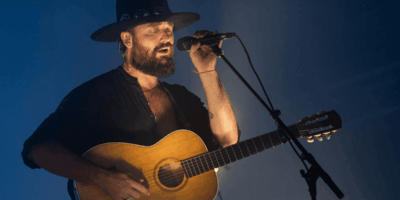This year’s 19th Biennale Of Sydney, for all its controversy, promises to be an exhibition of splendor and rapture, with a kaleidoscope of nationalities, artistic practices, and creative explorations, and Tori Wrånes is an artist who fits perfectly into the theme: You Imagine What You Desire.
The Norwegian artist, who started as a rock star slash actress, graduated from the National Academy in Oslo in 2009 and took the contemporary art world by its horns, addressing human presence and expanding concepts of reality across different genres, blending theatre, visual arts and music.
Wrånes will perform twice during the Biennale’s opening weekend on Cockatoo Island, the Biennale’s experientially focused venue, using costumes, props, architecture and sculpture to deform her appearance and create new constellations. What the performances will actually entail is still somewhat of a mystery, even to Wrånes herself who builds unique site specific experiences that reflect the location, human energy, her own mood on the day and weather conditions.
“The work is always very different, I work without any rules. Because my work is time-based I have to be able to change things and take risks. Some things I can’t decide until I’m actually there because I don’t know whether the sun will be high or low, if the weather will be crazy or even how I will feel in my body that day. How are the rest of the performers and also all the audience, the people who come to the space and the space itself? There are so many unpredictable factors that are relevant for making each piece.”
What’s promised is a one-off demonstration of the sort of contemporary art that immerses audiences in creative exploration and experience. It will be both a visual and sound focused piece, as Wrånes sees no need to separate the two.
“It seems to be difficult to separate the sound and the visual, what you hear, see and smell. Music and art are very much the same to me. It is just the techniques that are different, but it’s still about rhythm, temperature, colours and dynamic. When I sing it’s so close to painting, it’s natural to hear colour and see sound, to me it’s really natural that sound and image are so related. When I work with voice and sculpture it can go both ways, I can either make them say the same thing or let them go in different directions. I think music is very strong, it goes directly into the nervous system so it interesting to challenge the power of the two different mediums as they are extremely connected.”
We do know that she has solicited a crew of volunteer open-minded dance performers – emphasis on ‘interesting characters’ – to be choreographed by Norwegian Tomas Glans alongside Wrånes’ performance crew, with a menagerie of fantastical creatures conjured from her playful imagination in a direct response to the historical and physical landscape Cockatoo Island.
“I was on a site visit half a year ago when I decided what I wanted to do in a reaction to the space. I really love the space; it’s totally amazing. They are doing an incredible job of reconstructing the old frames and I love the old industrial buildings. I think the performance on Cockatoo Island is me meeting this incredible space.”
My interview with Wrånes, a twinkle in her eye and mischief in her voice, is punctuated by animated hand, voice and facial expressions, and her passion for her work is clear: “Sometimes it is necessary not to explain everything and just to do it because there is a physical need in the body to actually see it there, why not have it there… why not?”
Tori Wrånes will be performing her piece as part of the19th Biennale Of Sydney onSaturday March 22 and Sunday March 23 on Cockatoo Island.

































